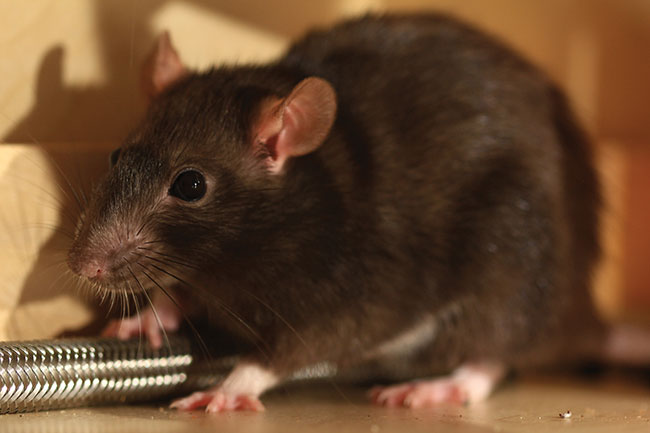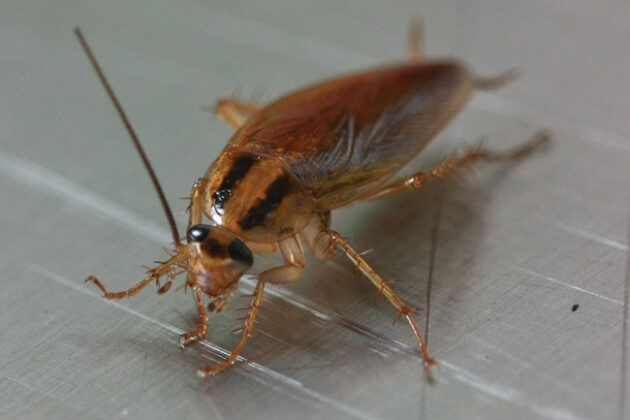
Features
How to control greenhouse pests using natural products
September 19, 2022 By Alice Sinia
 Although greenhouse pests are predominately plant-related pests, structural pests are still a major threat to greenhouses.
Although greenhouse pests are predominately plant-related pests, structural pests are still a major threat to greenhouses. Pest management is a vital component in keeping your greenhouse plants healthy. However, readily available food, warmth and moisture in greenhouses allow rapid development of pest populations. Early detection is important before the problem gets out of hand, or else your brand may be tarnished or face recalls, liabilities and, if the problem is big enough, even economic loss. Although greenhouse pests are predominately plant-related pests, structural pests are still a major threat to greenhouses; therefore, you should know what to look out for and have a plan in place.
Identifying the Correct Culprit
There are several common pests that wreak havoc inside your greenhouse:
Aphids: These tiny, soft-bodied, pear-shaped insects are one of the most common pests in greenhouses. They cluster in colonies on the leaves and stems of host plants, inserting their beaks to extract plant sap. This extraction stresses the plants and weakens them, causing their leaves to curl and become deformed. Aphids also transmit pathogens that cause plant diseases. Because they have fast reproductive rates, their population can grow rapidly in a short time, exceeding economic-injury levels. Therefore, monitoring, early detection and a quick start to treatment is crucial for effective control.
Fungus gnats: These tiny black flies cause direct damage to plants. Besides being nuisances and physical contaminants, adult gnats are not harmful, it is the larvae that feed on plant roots causing root damage severe enough to kill the plants. They also interfere with callus formation, causing damage to cuttings and affecting the growth of plants. These pests thrive in damp conditions, especially in soils or planting materials rich in organic matter such as decaying plant matter.
Slugs: These fleshy, slimy animals usually wreak havoc when the humidity is high, so greenhouses are an ideal location. They often come out at night, preferring cool, moist hiding places during the day. They cause damage by feeding on the plants, producing holes, and scarring the leaf surface. Small seedlings, ripening fruit and vegetables are vulnerable to these creatures.
Rodents: Greenhouses provide the perfect habitat for these mammals. Inside they find ample supplies of food, water, and shelter. However, they can cause a lot of damage by feeding on germinating seed or seeking out young plants. Rodent populations can grow rapidly, that is why it is imperative to frequently check for signs of activity and take quick action. Not only do rodents transmit diseases, carry ectoparasites (fleas, tick, and mites), they can also cause significant structural damage by chewing on portions of your greenhouse infrastructure by damaging irrigation systems and causing fires when they chew on electrical wires.
Surinam cockroach: This burrowing species of cockroach usually has dark brown or black bodies with shiny brown wings. It thrives in dark, loose, moist soil or leaf litter, making a greenhouse an ideal habitat. This cockroach likes to hide during the day in cracks/crevices and soil and emerges at night to feed on plants, causing extensive damage to plants even killing them.
Australian cockroach: Known as the “greenhouse cockroach,” it is attracted to hot, humid, and moist areas. It is reddish brown in colour with a distinct pale yellow line on the outer edge of the wings at the base and looks similar to the American cockroach, only smaller. This insect can heavily infest greenhouses, where it feeds on tender plant parts, especially seedlings, causing significant damage to plants or/and killing them.
Ants: These critters enter greenhouses to feed on flower nectar or honeydew produced by aphids or generally to forage. Ants often bury plants in soil when building nests above ground, and they disturb the soil around the plants when forming nests underground. Species such as carpenter ants can cause structural damage.

Getting Rid of Pests Using Environmentally-Friendly Products
Once you know which pests have invaded your greenhouse, it is time to get rid of them. However, how can you do that without harming the plants? Fortunately, here are some ways you can treat them:
- Insecticidal soap is known as one of the safest treatments. It leaves no residue and can be non-toxic to your plants or harvest if applied per label requirements. The fatty acids in the soap will penetrate the pests’ outer covering, killing them. One word of caution: do not use the soap in high temperatures since this can burn or stress plants.
There are also several sprays that help combat pests. However, inside of a greenhouse, you want safe products that will not affect the greenery. Here is a list of safe products that can be used to combat pests:
- Bacteria spray (Bti) registered for greenhouse use is host specific and will not harm people or greenery. It is sprinkled or sprayed on the plants and eaten by the pest, which disrupts the insects’ digestive system. Unfortunately, this spray can also kill some of the beneficial insects within your greenhouse, so use it only when necessary, with caution strictly following label directions.
- Neem spray comes from the fruit seeds of the neem tree. When sprayed onto plant leaves or on the insects directly, it disrupts development and feeding. When used as oil spray, it blocks pests’ breathing pores-spiracles. The product is most effective on immature insect pests.
- Boric acid and Diatomaceous Earth: These are considered “Green” insecticide and can be used in dry parts of your greenhouse for ants and crawling insects including cockroaches. They are safe if applied per label instruction. It sticks to pests as they crawl, and the insect ingests it when attempting to clean itself. The treatment disrupts digestion and a pest’s nervous system.
Good Bugs vs. Bad Bugs
As you search for natural pest management options, consider the use of beneficial insects. They are one of the most eco-friendly options available. In addition, when used in greenhouses, they are very likely not to come in contact with humans to bite or sting.
Ladybugs eat both insects and pollen. Attract them inside your greenhouse with flowers. They are also commercially available and can be ordered and stored in the refrigerator for several weeks before releasing them into the greenhouse. It is best to wait until evening to release them since they may fly away if released during the day due to heat.
Praying Mantis are available to purchase by the case, with each one hatching up to 400 nymphs. They will eat any insect they can catch and are effective in keeping down insect pest populations in horticultural systems.
Parasitic Wasps are tiny, non-stinging wasps that lay eggs inside developing stages of more than 200 species of harmful insects, thereby killing and controlling them naturally. These wasps are not harmful to people or pets. Since they consume nectar and pollen, attract them to your greenhouse with a diverse array of single blossomed flowers and flowering herbs.
Although there is no guarantee pests will not invade your greenhouse, if you keep it well maintained both inside and outside, you will have a better chance of combatting pest infestations. Remember, a professional pest management company will work with you to customize a plan to fit your needs and will be able to help you find environmentally conscientious solutions to pest problems that arise.
Alice Sinia is quality assurance manager for regulatory and lab services at Orkin Canada.
Print this page